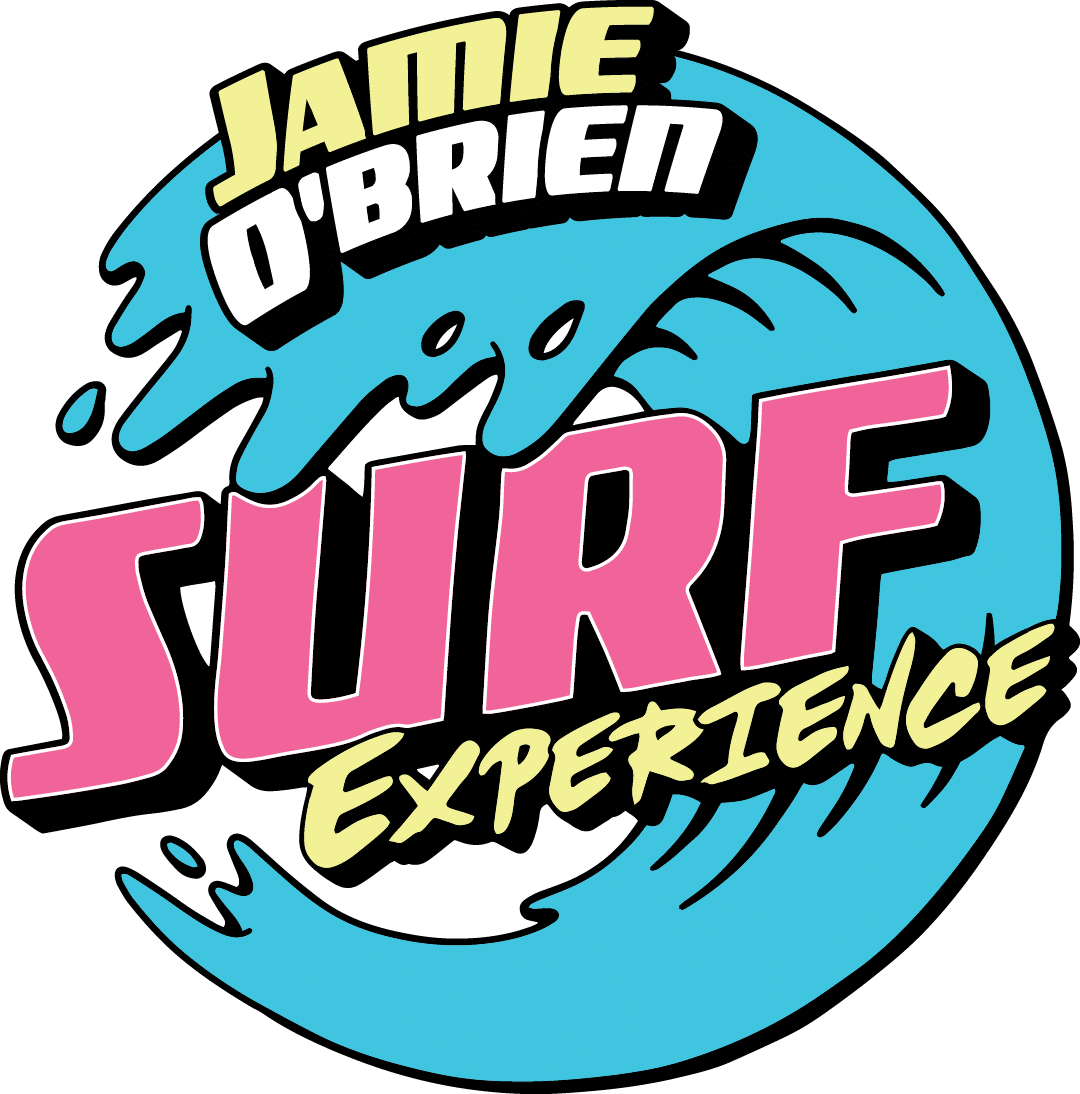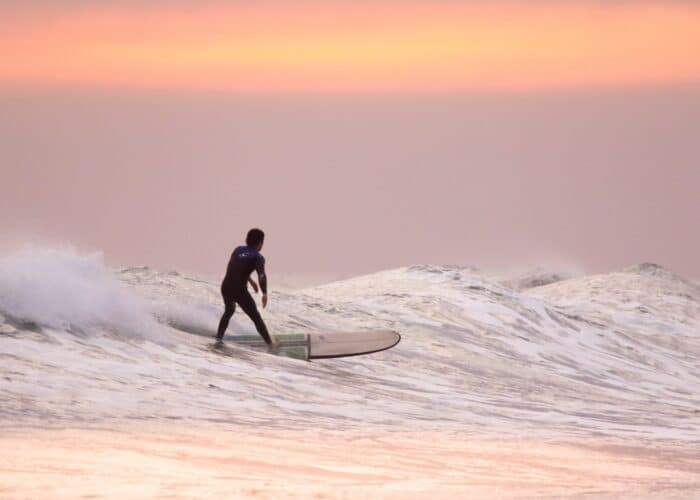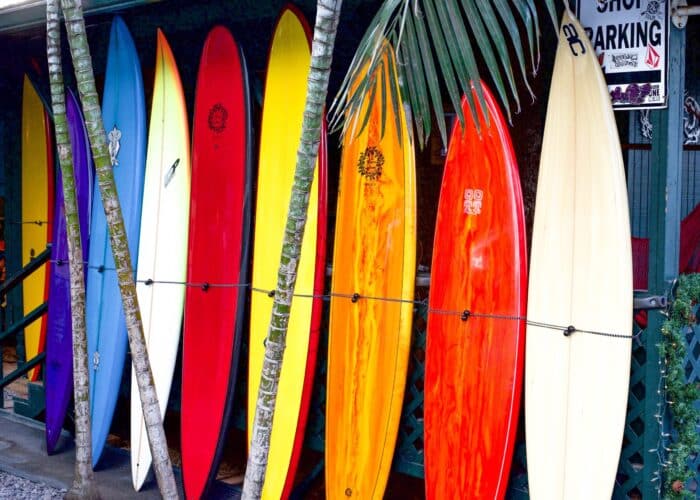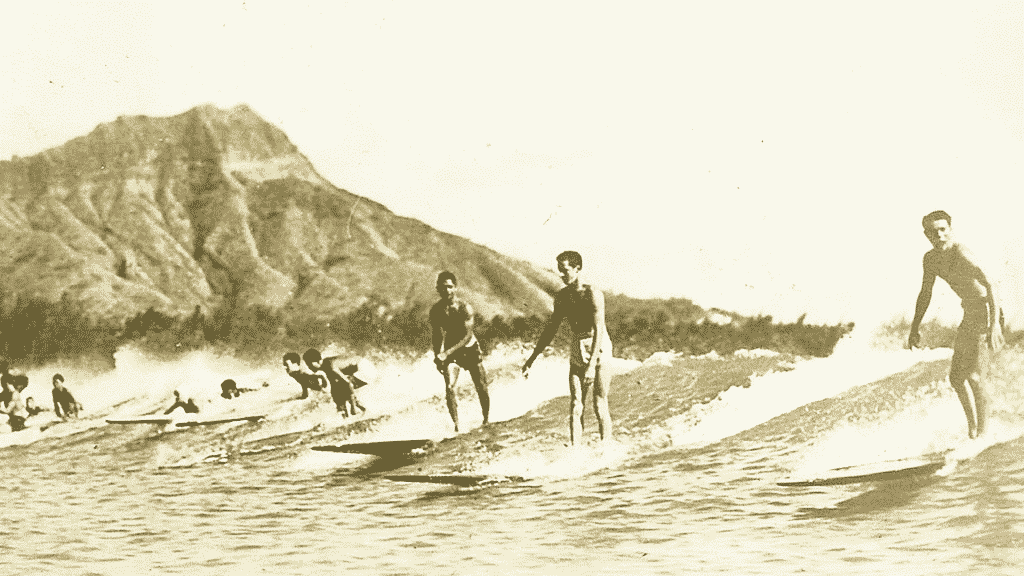
Our North Shore surf school sits on the most significant stretch of coastline in the entire surf world, the Seven Mile Miracle. Beyond Hawaii’s importance as the focal point of competitive surfing, it’s also the birthplace of surfing. Surfing’s ancient roots are a hot topic for debate amongst historians. The main debate centers around what constitutes as surfing and whether all forms of wave riding count as surfing in its earliest forms. Surfing as we know it today (riding a wave while standing on a board) was born in the very waters we teach our students to surf at our Oahu surf school. Surfing’s origins can be traced back to the first Polynesian settlers who arrived in the Hawaiian Islands by boat, using only the stars to navigate.
Surfing in Hawaii-Early History
It’s nearly impossible to date the exact origin of surfing because it predates European contact, and colonialism stamped out most of the historical evidence that would allow us to accurately pinpoint when the first wave was ridden. In fact, colonialism almost ended surfing entirely. Before European settlers arrived, surfing was practiced across Polynesia in Hawaii, Tahiti, New Zealand, and beyond. Surfing in Hawaii specifically played a large role in society, holding both recreational and religious significance. Boards were shaped by ancient craftsmen out of native Koa and Wiiwii trees. Ancient boards toward as tall as 15 feet and could weigh upwards of 150 pounds. All of Hawaiian society enjoyed surfing, from peasants to royalty. Royalty could often be spotted by the types of boards they rode. British Sea Captain Lord Byron wrote the following, after encountering surfing in the Hawaiian Islands, “to have a neat float board, well-kept, and dried, is to a Sandwich Islander (Polynesian) what a tilbury or cabriolet, or whatever light carriage may be in fashion is to a young Englishman.”
Surfing’s near end
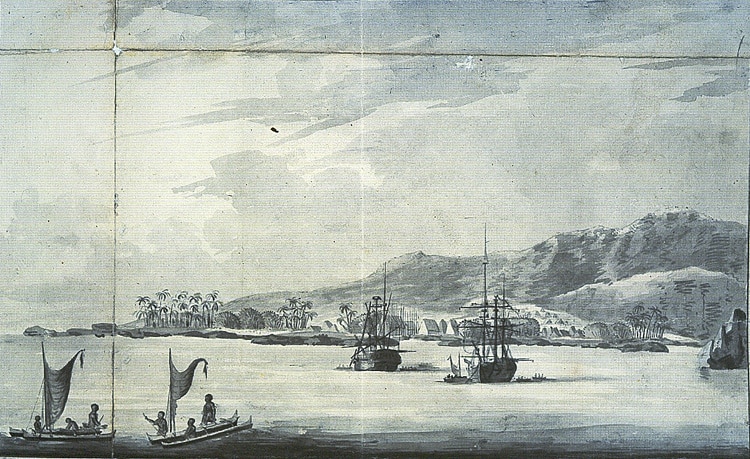
Because the Hawaiian Islands were so fertile, ancient Hawaiians had more time for recreation than their European counterparts. European settlers saw surfing and the abundance of recreation it represented as hedonistic and therefore did their best to wipe it out. Hiram Bingham, the leader of the first missionary party in Hawaii, recorded his ship’s encounter with surfing as they had reached the shore. Bingham writes, “The appearance of destitution, degradation, and barbarism, among the chattering and almost naked savages, whose heads and feet, and much of their sunburnt skins were bare, was appalling.” Bingham and his followers viewed surfing as at odds with the Christian life. So, Bingham, and the missionaries that followed him, set out to oust surfing from Hawaiian society. Along with surfing, colonialism also decimated much of the native Hawaiian population and nearly erased its culture. Between 1778 and 1893, the native population fell from three hundred thousand to under one hundred thousand.
Surfing in the 20th century
As western customs were pushed into the mainstream of Hawaiian society, surfing all but receded into history. Fortunately, there was a core group of practitioners who kept the sport alive, often surfing in secret. In the 20th century, surfing in Hawaii had a resurgence, thanks to surf legend and US Olympian Duke Kahanamoku, who used his popularity as an Olympic champion to bring surfing back into mainstream Hawaiian culture. Duke Kahanamoku and fellow surf legend, George Freeth, toured the East and West Coasts of the United States and put on surfing exhibitions. Before long, surfing was embedded in pop culture and became a fixture of Hawaiian society. A visit to Oahu was not complete without seeing the original Waikiki Beach Boys put on a show. Post-World War II, surfing blossomed in Hawaii and California. Movies like Gidget and Endless Summer, along with surf legends like Eddie Aikau, further perpetuated the surf craze, and soon surfing would become the global phenomena that it is today.
